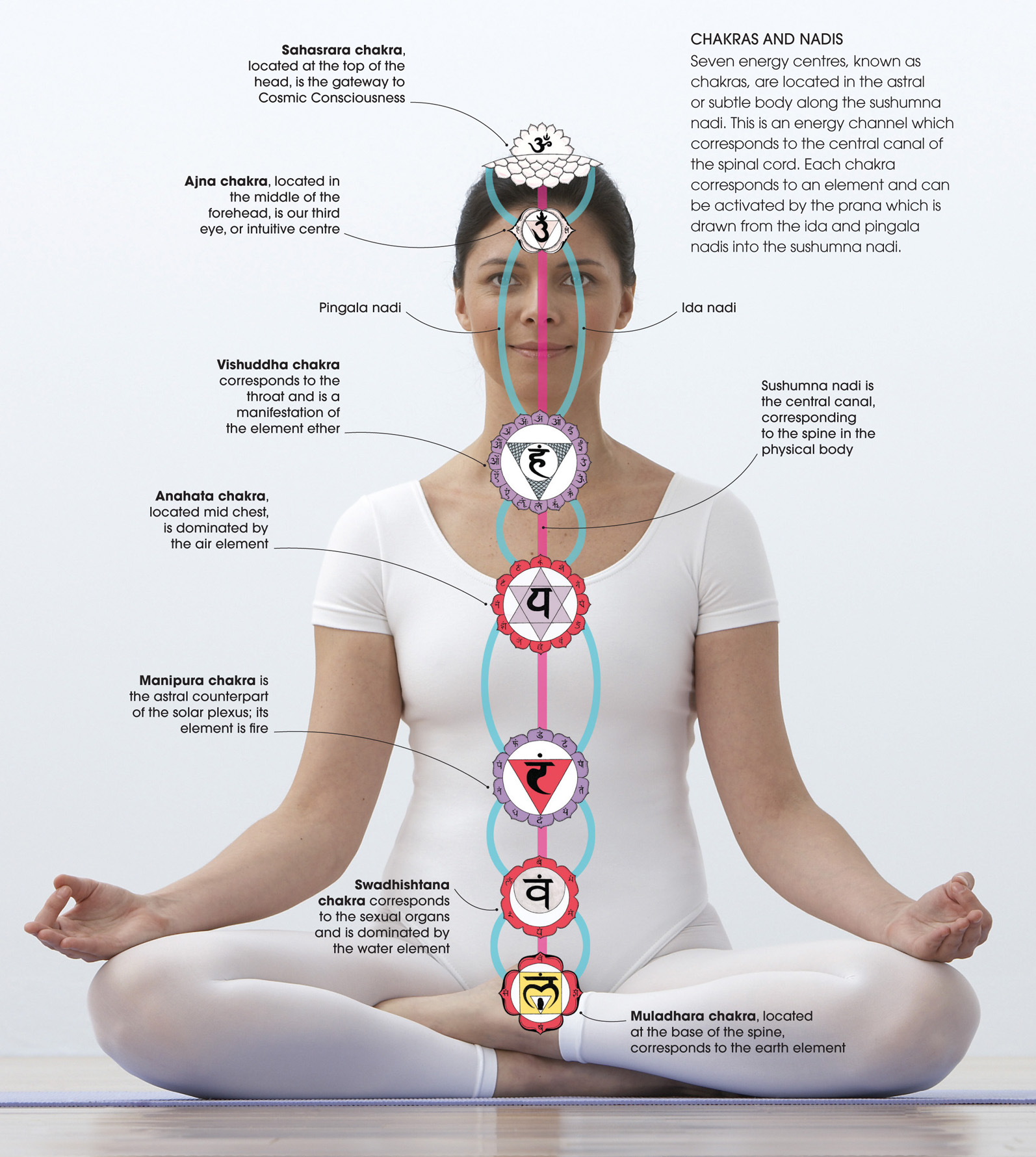Pranayama
In the yogic tradition, the breath is seen as the outward manifestation of prana, or vital energy. Gaining control of the breath by practising breathing exercises – pranayama – increases the flow of prana through the body, which literally recharges body and mind. Aim to practise pranayama for up to 30 minutes daily, before or after asana practice.
Circulation of prana
According to the ancient yogic texts, prana circulates through the body in a network of 72,000 astral energy channels, or nadis. These not only permeate every part of the body, but also create an extensive energy field, or aura, around it. When you perform asanas, you apply pressure to points where important nadis cross. This works like acupressure, unblocking vital energy.
Strengthening the flow of prana
Yoga breathing exercises focus specifically on opening two major nadis – the pingala nadi and the ida nadi – and strengthening the flow of prana in them. The pingala nadi corresponds to the right nostril and left hemisphere of the brain, and the ida nadi to the left nostril and right brain. In the mystical language of yoga, the pingala nadi is warming and corresponds to Ha, or the sun; the ida is cooling and corresponds to Tha, or the moon. The final step of the eight-fold path of Hatha and Raja Yoga comes about when there is perfect balance between these two nadis. The most important nadi, however, is the sushumna, which corresponds to the spinal cord. When the pingala and ida nadis are in balance, the sushumna opens, allowing vital energy to flow upwards and spiritual enlightenment to occur.
Training the respiratory muscles
Although the language and imagery of pranayama may appear quite mystical, in practice its effects are concrete. Whether you are a beginner or a more advanced yoga practitioner, pranayama trains the respiratory muscles, develops use of your lungs’ full capacity, and improves your body’s supply of oxygen while reducing its carbon dioxide levels. It also helps to relax and strengthen your nervous system, calm the mind, and improve concentration.
Begin your pranayama practice by lying in Corpse pose for 2–3 minutes. After your practice, relax in Corpse pose again to release any tension in the hips or lower back from sitting cross-legged.
What is prana?
Prana, or vital energy, is found in all forms of life, from mineral to mankind, where its force controls and regulates every part of the body. Although prana is in all forms of matter, it is not matter. It is the energy that animates matter.
Prana is in the air, but it is not oxygen, nor any of its chemical constituents. It is in food, water, and sunlight, and yet it is not vitamin, heat, or light. Food, water, and air are only the media through which prana is carried. We absorb prana through the food we eat, the water we drink, and the air we breathe.
The easiest way to control prana is to regulate the breath – pranayama. Every part of the body can be filled with prana and when we do this, the entire body is under our control.
